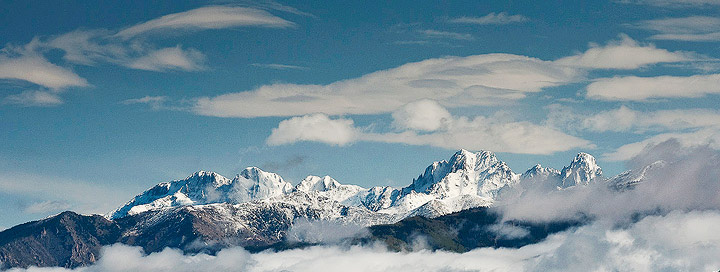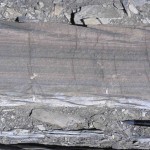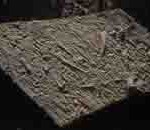Wave-Modified Turbidite Project
Project Description:
This project is a collaborative experimental and field study with Dr. Jeff Parsons, Department of Oceanography, University of Washington to look at combined flows that are largely driven by excess-weight forces (density-driven) and also affected by waves.
Experimental Component:
A unique tilting wave duct will be used to explore the stability conditions of wave-modified turbidity currents. The experimental flume allows for a continuum of bed slopes between 0 and 7°; higher slopes, up to 15°, may be possible. We hope to identity an equilibrium sediment concentration and gravitational flux for a given slope, grain-size distribution and wave environment. With exhaustive measurement of the velocity and concentration field will be able to assess the performance of existing fluid-mud models. Of particular interest is the slope at which gravitational motions become significant relative to oscillatory motions. Close attention will be paid to the type of sedimentary structures that form when gravitational motion becomes significant, whether they are unidirectional, oscillatory or combined flow. This work will examine the degree to which waves enhance gravity-driven transport under certain conditions.
Field Component:
Our observations and conceptual models developed from the laboratory measurements will be integrated with data from the rock record. Three formations with deposits previously interpreted to contain tempestites with features that reflect deposition from powerful gravity-driven flows, will be studied to elucidate the depositional mechanics of such flows (Minturn Formation of central Colorado; Chapel Island Formations of southeast
Newfoundland; Westward Ho! and Bude Formations of southwest England). Our initial data suggest that unique sedimentary features are generated by wave-modified turbidity currents and that an integrated experimental and outcrop study can explain the dynamics of these flows and both provide criteria for the recognition of such deposits and clarify the nature of depositional systems in which such flows occur.
Photo: Reverse-to-normal graded bed with ripples at base and top and upper plane bed parallel lamination in center. These structures record both waxing and waning flow of a hyperpycnal flow associated with a single flood on land.
Photo: Well-developed flutes on the base of these event beds.
Photo: Hummocky cross-stratified sandstone bed. Bedding is vertical and up direction is to the left. The bed contains lamination of an asymmetrical hummocky dune and is capped by combined-flow ripples.
Photo: Groove and prod marks on the base of the event beds.




